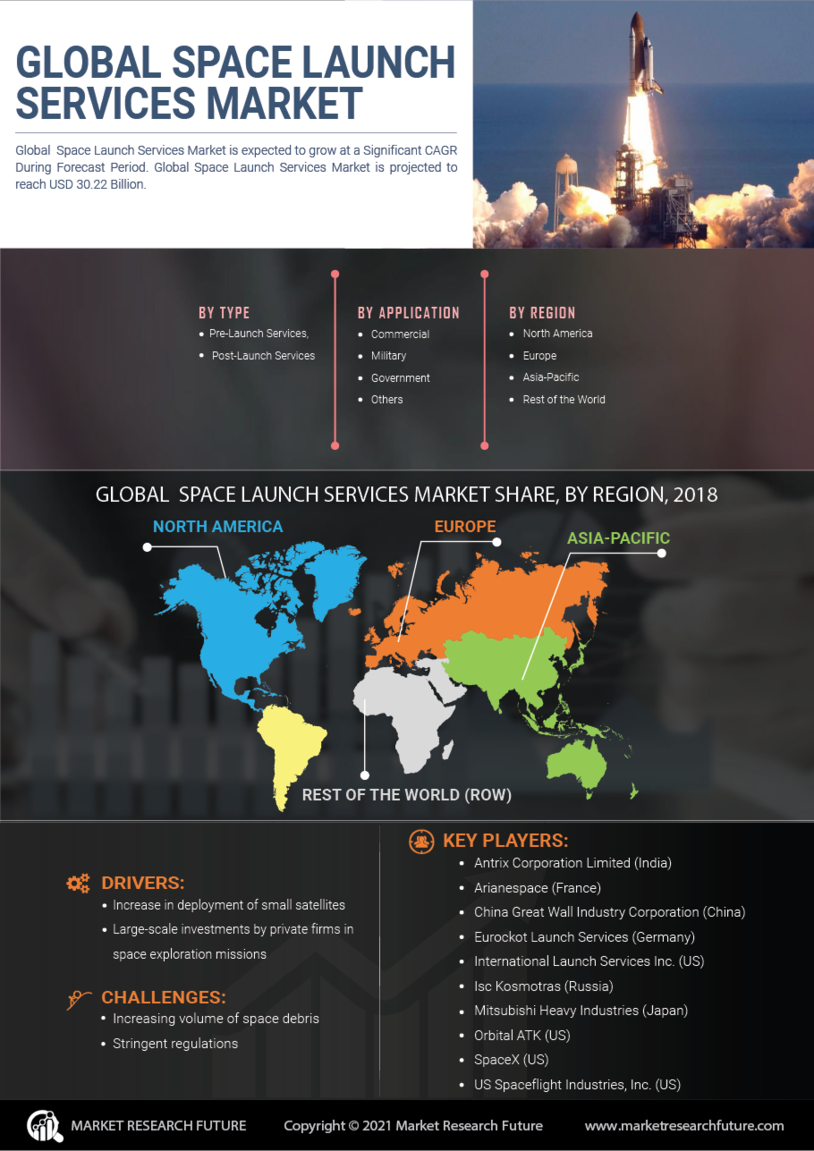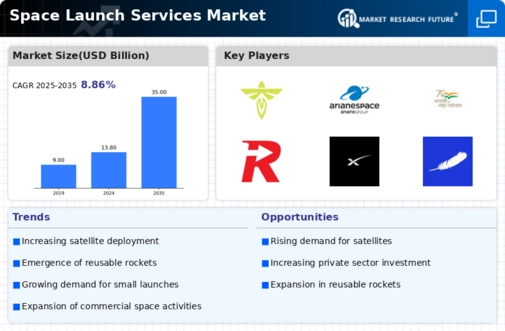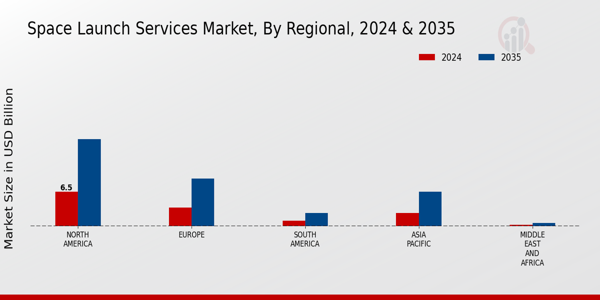Market Growth Projections
The Global Space Launch Services Market Industry is poised for substantial growth, with projections indicating a market value of 13.8 USD Billion in 2024 and an anticipated increase to 35 USD Billion by 2035. This growth trajectory suggests a compound annual growth rate (CAGR) of 8.86% from 2025 to 2035. Factors contributing to this expansion include rising demand for satellite launches, increased government investments, and the emergence of new players in the space sector. As the industry evolves, it is expected to attract further investments and innovations, solidifying its position as a critical component of the global economy.
Emergence of New Space Players
The Global Space Launch Services Market Industry is witnessing the emergence of new players, particularly in the private sector, which is reshaping the competitive landscape. Companies such as SpaceX and Rocket Lab are innovating with reusable launch vehicles, significantly lowering the cost of access to space. This influx of new entrants not only stimulates competition but also drives technological advancements, making space more accessible. The presence of these companies is likely to contribute to the market's projected CAGR of 8.86% from 2025 to 2035, as they expand their service offerings and cater to a diverse range of customer needs.
Growing Commercial Space Activities
The Global Space Launch Services Market Industry is significantly impacted by the growing commercial space activities, which encompass satellite deployment, space tourism, and in-orbit services. As businesses recognize the potential of space for commercial ventures, there is an increasing demand for launch services to support these initiatives. This trend is evident in the rise of companies focusing on space tourism, which requires reliable launch services to transport customers to suborbital and orbital destinations. The expansion of commercial activities is likely to drive the market's growth, contributing to the projected increase in market value from 13.8 USD Billion in 2024 to 35 USD Billion by 2035.
Government Investments in Space Programs
Government investments in space programs are a pivotal driver of the Global Space Launch Services Market Industry. Countries around the world are recognizing the strategic importance of space capabilities, leading to increased funding for national space agencies and initiatives. For instance, the United States, through NASA and the Department of Defense, continues to allocate substantial budgets for launch services and satellite development. This trend is mirrored globally, with nations like India and China ramping up their space exploration efforts. Such investments not only bolster national security but also stimulate economic growth, thereby enhancing the overall market landscape.
Increasing Demand for Satellite Launches
The Global Space Launch Services Market Industry experiences a notable surge in demand for satellite launches, driven by the growing need for communication, Earth observation, and scientific research. As of 2024, the market is valued at approximately 13.8 USD Billion, reflecting the increasing reliance on satellite technology across various sectors. Governments and private entities are investing heavily in satellite constellations to enhance connectivity and data collection capabilities. This trend is expected to continue, with projections indicating that the market could reach 35 USD Billion by 2035, showcasing a robust growth trajectory fueled by advancements in launch technologies and reduced costs.
Technological Advancements in Launch Systems
Technological advancements in launch systems are significantly influencing the Global Space Launch Services Market Industry. Innovations such as reusable rocket technology and improved propulsion systems are enhancing the efficiency and reliability of space launches. Companies are increasingly adopting these technologies to reduce costs and increase launch frequency. For example, SpaceX's Falcon 9 has demonstrated the viability of reusability, which has become a benchmark in the industry. As these technologies continue to evolve, they are expected to attract more customers and contribute to the market's growth, aligning with the anticipated CAGR of 8.86% from 2025 to 2035.















